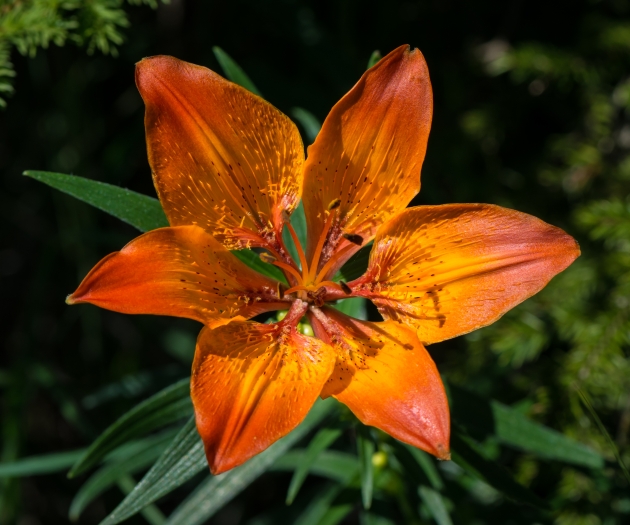Orange Lily
(Lilium bulbiferum)
Orange Lily (Lilium bulbiferum)
/
/

Uoaei1
CC BY-SA 3.0


















































Estimated Native Range
Summary
The Orange Lily is valued for its vibrant, fiery-hued flowers that add a splash of color to gardens. It is often used in borders, wildflower meadows, and as a cut flower due to its striking appearance. This lily requires well-drained soil, preferably with a calcareous component, and thrives in full sun, although it can tolerate light shade. It is relatively easy to grow and maintain, making it a popular choice for gardeners. Watering should be moderate, ensuring the soil is not waterlogged. While generally disease-resistant, it can be susceptible to lily beetle infestations.CC BY-SA 4.0
Plant Description
- Plant Type: Herb
- Height: 3-4 feet
- Width: 0.6-0.7 feet
- Growth Rate: Moderate
- Flower Color: Orange
- Flowering Season: Summer
- Leaf Retention: Deciduous
Growth Requirements
- Sun: Full Sun
- Water: Medium
- Drainage: Slow, Medium, Fast
Common Uses
Bee Garden, Bird Garden, Butterfly Garden, Edible*Disclaimer: Easyscape's listed plant edibility is for informational use. Always verify the safety and proper identification of any plant before consumption., Fragrant, Hummingbird Garden, Low Maintenance, Showy Flowers
Natural Habitat
native to mountainous areas, grassy slopes, and woodland clearings of Europe
Other Names
Common Names: Fire Lily, Jimmy’s Bane, Tiger Lily, Saffron Lily, Fire Lily, Brand-Lilje, Feuer-Lilie, Ruskolilja, Lis Safrance, Lis Bulbifère
Scientific Names: , Lilium bulbiferum, Lilium bulbiferum var. croceum, Lilium bulbiferum subsp. croceum, Lilium croceum, Lilium aurantiacum, Lilium pubescens, Lilium sibiricum, Lilium atrosanguineum, Lilium biligulatum
GBIF Accepted Name: Lilium bulbiferum L.